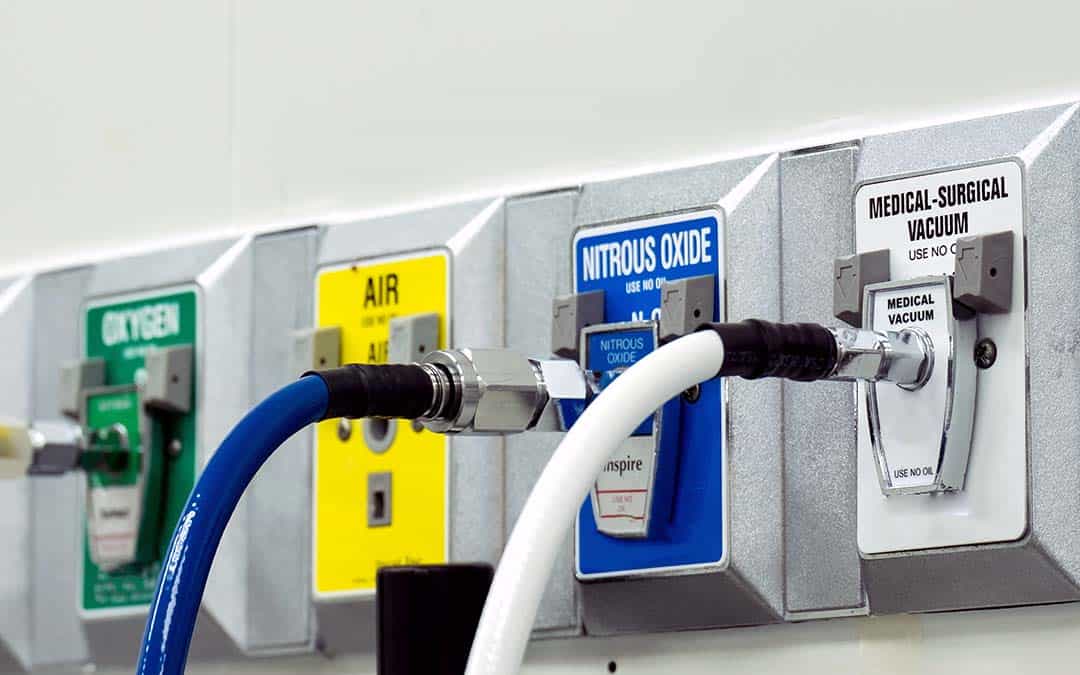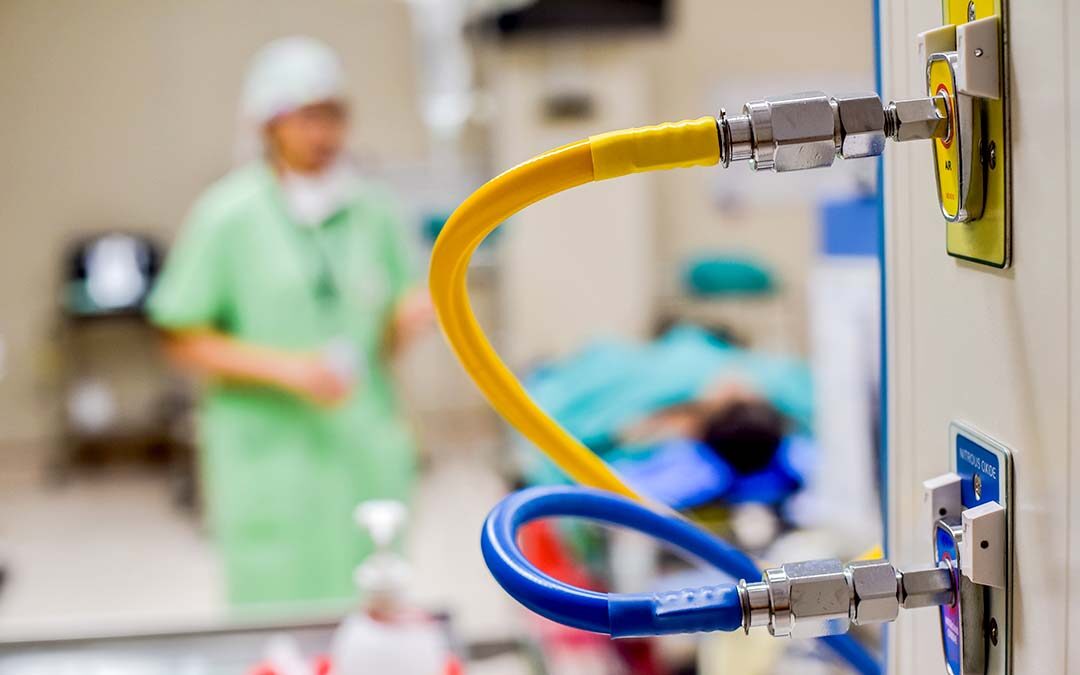Medical gases save lives, making them essential to hospitals, medical clinics and dental offices worldwide. As a healthcare business professional, it is important to know the most common types of gases, the functions of each and the systems that maintain them.
In no particular order, here are the top five medical gases used across health and dental care.
1. Oxygen
Introduced in the early 1900s, oxygen is a medical gas used in virtually every healthcare setting to support oxygen-deficient patients. It is typically used for resuscitation and inhalation therapy, and can also aid medical conditions such as carbon monoxide poisoning, cardiovascular and respiratory arrest, cyanosis, life support, etc.
Larger healthcare settings can maintain vacuum-insulated evaporators for their oxygen, where liquid oxygen is kept in a large storage system to be evaporated later into a concentrated oxygen supply. For smaller medical settings, oxygen can also be supplied via standard gas cylinders, bulk cryogenic tanks or small liquid oxygen tanks called dewars.

2. Carbon Dioxide
We clear our carbon dioxide from our bodies with every breath, but this odorless, colorless gas can also be used for a variety of applications in medical care.
The most common use for carbon dioxide is insufflation, where it is used to blow in the body cavity to enlarge and stabilize it. This technique is utilized for less invasive surgeries to give better visibility and access to the surgical areas. When mixed with oxygen, carbon dioxide can also provide respiratory stimulation during anesthetic administration. On top of this, it can also be used as a cooling gas for cryotherapy.
In larger hospitals, carbon dioxide can be piped in, but in most healthcare settings it is typically supplied through a tank.
3. Nitrogen
Nitrogen is a non-toxic and non-flammable gas that does not react chemically with ordinary metals. Because of this, it can be used to power up surgical equipment and tools for various procedures. It is also a cryogen, able to freeze blood, tissue and other biological specimens. This freezing ability can not only help with preservation, but in dermatology and cryosurgery, it can also destroy diseased or unwanted tissue.
Nitrogen can be stored in and piped from a manifold of cylinders. It is important to have monitoring systems in place at the source and use site of this medical gas, as its air-displacing properties can put one’s safety at risk.
4. Nitrous Oxide
Nitrous oxide, popularly known as laughing gas, is an analgesic and anesthetic agent commonly used in dental and medical offices. Used preoperatively, it inhibits pain transmission during surgical procedures. Because of its pain-blocking abilities, it also works as pain relief when combined with oxygen, and is often used in childbirth, ambulance care, dental care and other painful procedures.
Nitrous oxide is usually delivered in standard tanks and supplied through the medical gas system. It can also be stored in cylinders, as long as it is kept in a well-ventilated area away from sources of extreme temperature and flammable materials.

5. Medical Air
Free of contaminants, particles, oil and odors, medical air is a clean supply of compressed air used for patient respiration. It is used widely in ICU, pediatric ICU and neonatal ICU areas for surgical procedures to keep patients comfortably breathing. This medical gas can only be used to supply human respiration and for calibration of respiratory applicating medical devices. It should never be used in place of oxygen.
Medical air is supplied by a specialized air compressor, and is supplied by this medical air distribution system only. Clean outside air is pressurized to be brought inside to the patient, and must be dry to prevent water buildup in your pipeline.
CalOx Inc is a medical gas supplier and can help supply your business, facility or individual with high-quality, medical-grade gases. Reach out to CalOx today to find out how they can help you stay stocked with all types of these life-saving gases.
